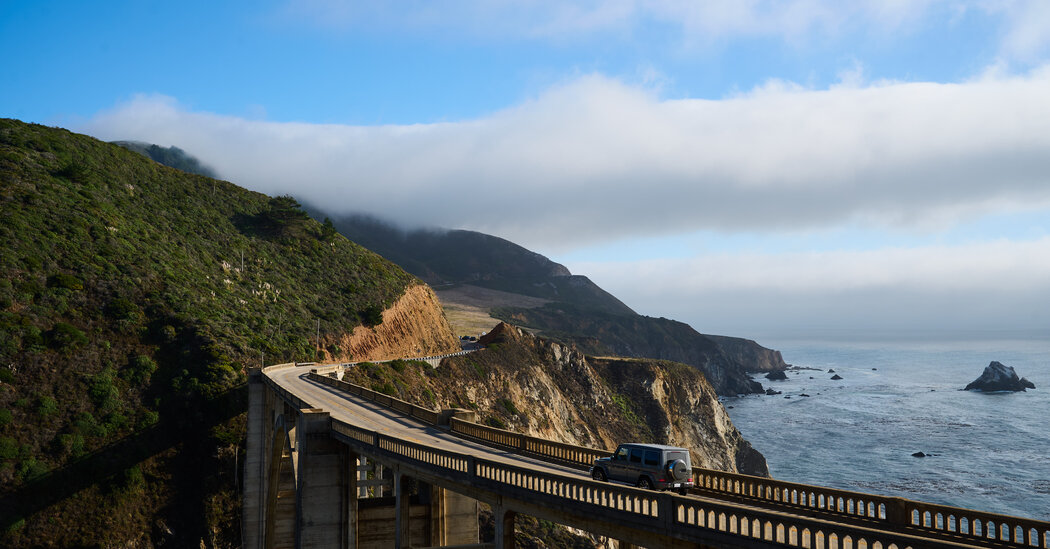The 70 miles of California coastline that makes up the unincorporated area of Big Sur has a storied, almost mystical allure, largely thanks to its staggering beauty. With redwood forests, stunning Pacific views, winding rivers and natural hot springs, the area has for decades attracted celebrities, artists and millions of visitors. So many visitors in fact, that these days, Kirk Gafill, the president of the Big Sur Chamber of Commerce, estimates that 90 percent of the local economy is tourism-dependent.
But getting there, and living there, is increasingly difficult.
Big Sur’s main thoroughfare is Highway 1, a scenic two-lane road constructed between 1919 and 1937 as part of a statewide initiative to make the California coastline a drivable tourist attraction. In the past two years, the area has been hit by fires, heavy winter storms and landslides that cut off the community for sometimes months at a time. In March, one chunk of the road crumbled into the sea, restricting car travel to residents only for two months. Another debilitating landslide, in February, continues to cut off the southern portion of the coast: Last month, work in the area to remove debris from the road was paused indefinitely. According to the California Department of Transportation (known as Caltrans), that portion of the roadway won’t reopen until 2025, at the earliest.
“It’s probably one of the challenging places to keep a road open on the coast of the lower 48,” said Jonathan Warrick, a Santa Cruz-based research geologist with the U.S. Geological Survey.
There’s no escaping the fact that the coast is crumbling into the sea. While these issues aren’t new to the area — the geological composition of Big Sur has made landslides an inevitability since Highway 1 was carved into the Santa Lucia Mountains — the frequency with which they happen, and the extremity of the closures, have led to a difficult few years. Much like other popular tourist destinations coping with the effects of climate change around the world, from Venice to Australia’s Great Barrier Reef, Big Sur is faced with the challenge of maintaining tourism, on which the community is economically reliant, while also limiting the impact of millions of visitors on the area’s fragile environment.
For locals and visitors alike, there is a pressing need to do something to preserve what’s here, to figure out a way to coexist with this awe-inspiring landscape. This is particularly challenging because of the area’s unique geography, its lack of a single governing body, plus a growing housing crisis that threatens to further shrink the full-time Big Sur population.










